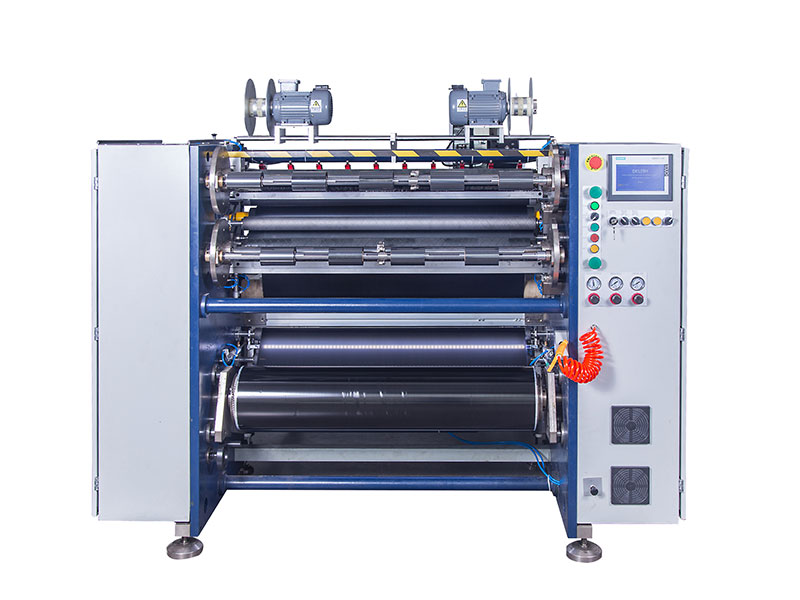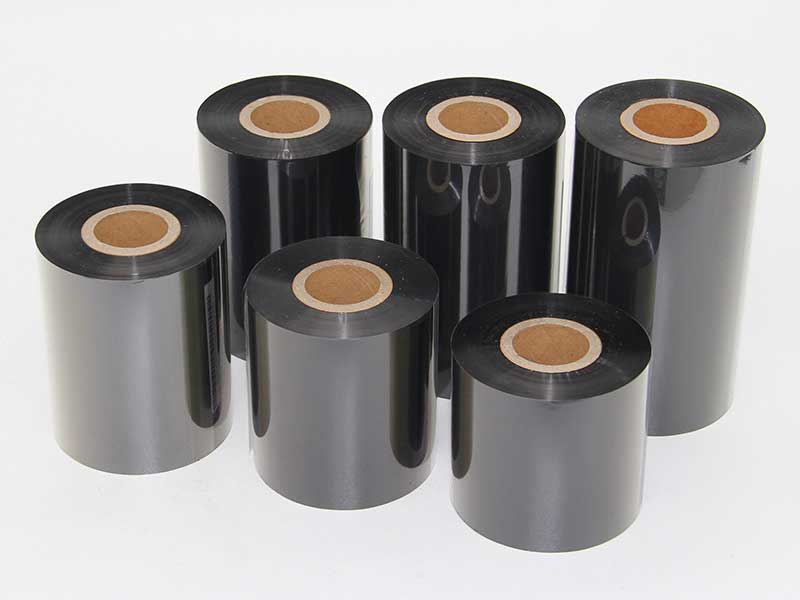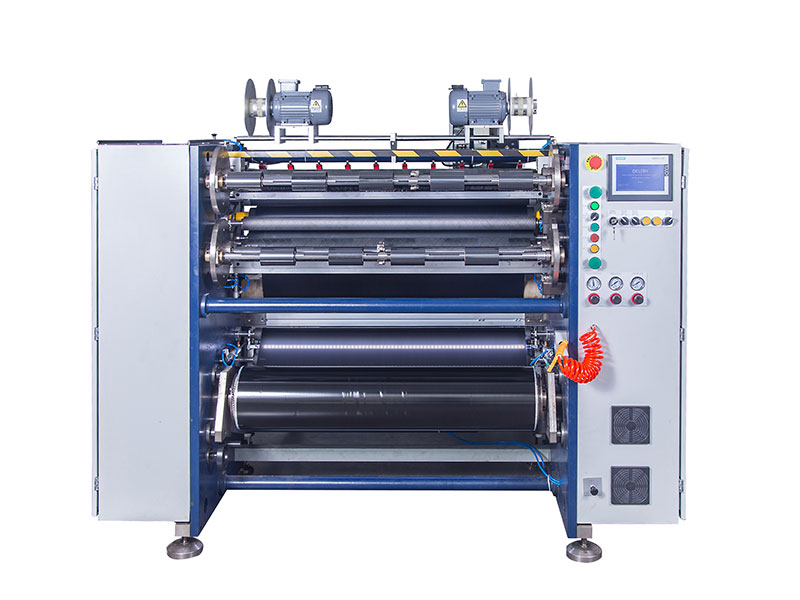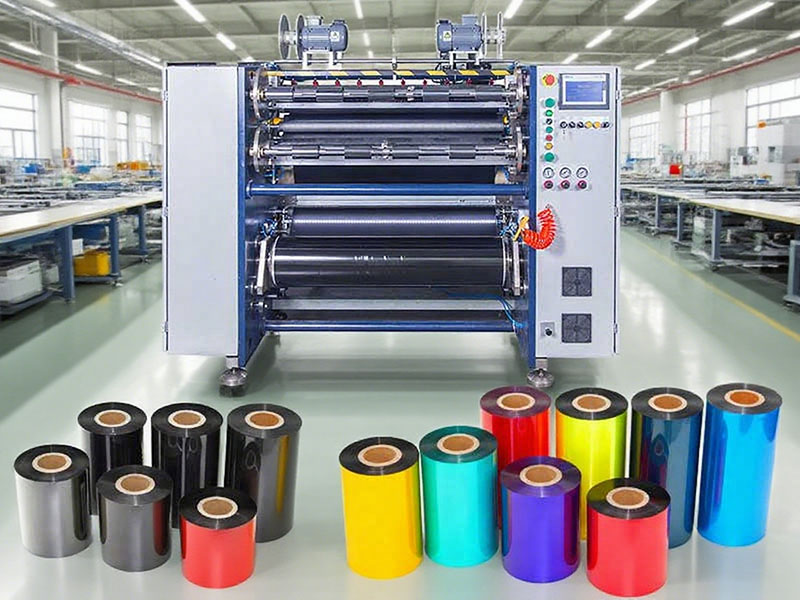In the current wave of global manufacturing, "small batches and multiple varieties" has become an irreversible core trend. Personalized consumer demand, accelerated market iteration, and fragmentation of orders are all forcing supply chains and production enterprises to transform and upgrade. This challenge is particularly acute for the thermal transfer ribbon (printing consumables) industry. The ultimate weapon to meet this challenge is the flexible production application of the ribbon slitting machine. It is no longer just an auxiliary device, but a magic weapon for enterprises to enhance their competitiveness and seize the market.

1. Challenges of the times: Why has "flexible production" become a rigid need?
Traditional ribbon production models rely on large-scale, standardized orders. A slitting machine may be slitting ribbons of the same size (e.g., width, length, model) for days or even weeks. However, this model is struggling today:
1. Fragmented orders: Customers may only order dozens or hundreds of rolls of ribbon of specific specifications at a time, requiring fast delivery.
2. Diversified specifications: Different printer models and different application scenarios (such as clothing tags, PCB boards, food packaging) require ribbons of different widths (ranging from 20mm to 120mm), different lengths, and different materials (wax-based, hybrid-based, resin-based).
3. Huge inventory pressure: If all possible ribbons are pre-cut for emergencies, it will lead to heavy capital occupation, high storage costs, and the risk of expiration.
4. Tight delivery time: The speed of market response determines customer satisfaction, and lengthy production preparation and changeover times cannot meet immediate demand.
In the face of these pain points, enterprises must have a set of production capabilities that can "respond quickly, flexibly transform, and change on demand". This is the core value of flexible production.

2. Core magic weapon: How does modern ribbon slitting machine achieve "flexible production"?
The modern high-precision ribbon slitting machine perfectly interprets the connotation of flexible production through the following technological innovations:
1. Extremely fast mold change and automatic setting
• Toolless switching system: This is a revolutionary technology for flexible production. Traditional slitting machines require replacing the entire cutter shaft or manually adjusting multiple blades, which can take up to tens of minutes or even hours. Modern slitting machines feature independent servo-controlled tool holders, and the position of each blade is precisely controlled by a computer.
• "One-click order change": The operator only needs to enter the specification parameters of the next order (such as width, roll diameter, length) on the touch screen human-machine interface, and the system can automatically and synchronously adjust the position of all blades, and the whole process is completed within 1-3 minutes, achieving almost zero pause specification switching.
2. High precision and high quality guarantee
• Servo drive and tension control: Full servo motor drive and high-precision tension sensor are used to ensure stable tension throughout the whole process from large coil master coil to slitting small coil. This is very useful for slitting extremely narrow ribbons such as < 10mm) or extremely stretchable film-based ribbon is crucial, which can effectively avoid problems such as snake, wrinkling, and fracture, and ensure that the quality of every small batch order is stable and reliable.
• Online Inspection and Automatic Deviation Correction: Integrated CCD visual inspection or ultrasonic sensors to monitor the quality of the slitting edge in real time and perform automatic deviation correction to ensure the consistency of the slitting width, reduce scrap, and improve the yield rate.
3. Informatization and intelligent management
• MES/ERP system integration: The flexible slitting machine can be used as a node of the smart factory, seamlessly connecting with the upper management system (MES manufacturing execution system, ERP enterprise resource planning). Order information can be sent directly to the equipment, and production data (such as output, time consumed, scrap rate) can also be uploaded in real time to achieve transparency and digital management of the production process.
• Recipe management function: The device can store the slitting parameters (recipes) of hundreds of different products. When the same order is received again, the historical recipe can be directly recalled, completely eliminating human setting errors and ensuring product consistency.
4. Wide material adaptability
• A good flexible slitting machine should be able to handle ribbons of various substrates, whether wax-based, mixed-based or full resin-based, whether it is thin PET film or other special coating materials, by adjusting parameters such as tension, pressure, and speed to achieve the best slitting effect.

3. Application analysis: The huge benefits brought by flexible production
By integrating flexible slitting machines into your production process, businesses will see significant improvements in the following aspects:
• Multiplied response speed: Ability to immediately process urgent orders and micro orders, deliver customers as quickly as possible, and become a powerful tool to seize the market.
• Achieve "zero inventory" production: enterprises can only stock large coils and cut them on demand after receiving orders. It greatly reduces the inventory and capital occupation of finished products, and realizes the transformation to the "production to order" model.
• Reduced costs and waste: extremely short changeover times reduce equipment idling waste; High-precision slitting reduces trimming and scrap; Automated operations reduce reliance on skilled workers, lowering labor costs.
• Enhance competitiveness and customer stickiness: It can provide customers with "one-stop" customized services, no matter how special the needs are and how small the batch size is, which can be quickly met, thereby building strong service barriers and enhancing customer dependence.
4. Conclusion
In the new era of small batches and multiple varieties, the connotation of manufacturing capacity has shifted from "scale and cost" to "speed and flexibility". As the last key process of ribbon processing, the level of flexibility and intelligence of the ribbon slitting machine directly determines the market adaptability and profitability of the enterprise. Investing in an advanced flexible ribbon slitting machine is not just about buying a piece of equipment, but equipping the enterprise with a set of core operating systems to cope with future market changes, which is a magic weapon for winning in the true sense. It allows enterprises to change from passively predicting the market to actively responding to and leading demand, and finally stand out in the fierce competition.
 The Strings of Tension: The Invisible Movement Behind the Precision Revolution in Ribbon Slitting Machines
The Strings of Tension: The Invisible Movement Behind the Precision Revolution in Ribbon Slitting Machines Ribbon slitting machine: the efficiency engine of printing consumables production
Ribbon slitting machine: the efficiency engine of printing consumables production Automated ribbon slitting machine: a revolutionary tool for enterprise labor cost optimization
Automated ribbon slitting machine: a revolutionary tool for enterprise labor cost optimization 5 core parameters that must be paid attention to when purchasing an industrial ribbon slitting machine
5 core parameters that must be paid attention to when purchasing an industrial ribbon slitting machine Avoiding slitting losses: the core criterion for high-quality ribbon slitting machines
Avoiding slitting losses: the core criterion for high-quality ribbon slitting machines